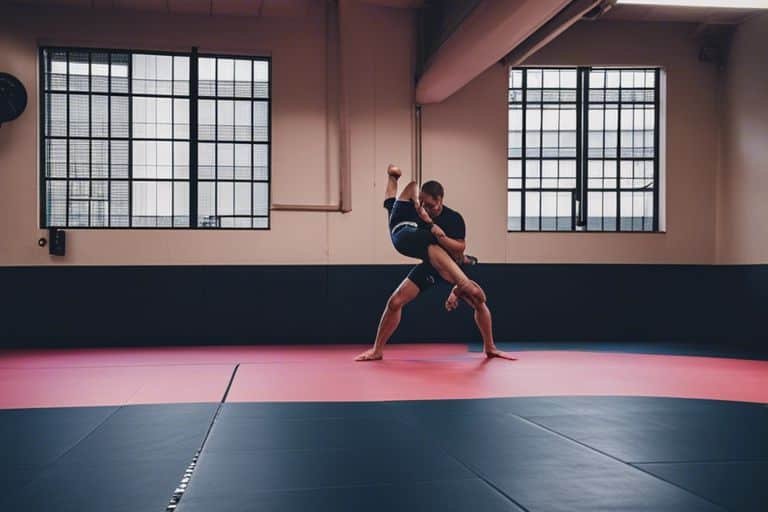Greetings, enthusiast. When it comes to mastering the art of no-gi grappling, it is imperative that you familiarise yourself with the core techniques that will elevate your game and give you an edge on the mats. Without the use of a traditional uniform, no-gi grappling requires a specific set of skills that prioritise control, speed, and precision. In this informative blog post, we will delve into the essential techniques that you need to know to excel in this dynamic and challenging martial art.
Key Takeaways:
- No-Gi Grappling focuses on techniques that do not require the use of the traditional uniform or gi, emphasizing a more adaptable and versatile approach to grappling.
- Key Techniques in No-Gi Grappling include a strong emphasis on controlling the opponent’s body, finding opportunities for submissions, and using takedowns and transitions to gain the upper hand.
- No-Gi Grappling techniques often rely on body leverage and positioning to maintain control and execute effective moves without the added support of a gi.
- Grappling without a gi requires practitioners to develop a strong grip and strength in their movements, as they must rely more on their own physicality to control and manoeuvre their opponent.
- Practising No-Gi Grappling can provide a full-body workout and improve overall athleticism due to the increased emphasis on mobility and physical strength.

Fundamental Techniques of No-Gi Grappling
When it comes to mastering the art of no-gi grappling, there are several fundamental techniques that you should prioritise. These core techniques form the foundation of your no-gi game and are essential for building a strong skillset. In order to stay up to date with the latest no-gi techniques, make sure to check out BJJ Heroes’ article on Top 5 Modern No-Gi Jiu-Jitsu Techniques.
Takedowns and Throws
One of the most crucial aspects of no-gi grappling is the ability to execute effective takedowns and throws. You need to be able to confidently take your opponent to the ground and control the momentum of the match. Whether it’s through explosive double leg takedowns or slick hip throws, mastering these techniques will enable you to dictate the pace of the fight. The key is to remain balanced and focused, using your body positioning and leverage to overpower your opponent and secure dominant positions.
Guard Passes and Control
Another essential element of no-gi grappling is the ability to pass your opponent’s guard and establish control from top positions. Effective guard passing requires a combination of agility, timing, and technique. You must be able to anticipate your opponent’s movements and effectively neutralise their defences. Once you establish a dominant position, such as side control or mount, you need to be able to maintain control and apply pressure to immobilise your opponent. Developing a strong top game will allow you to effectively dictate the flow of the match, creating opportunities to set up submissions and secure victory.
Submissions in No-Gi Grappling
When it comes to no-gi grappling, the ability to secure a submission is essential for success. Submissions, which are techniques used to force your opponent to submit or surrender, are a key component of no-gi grappling. In this chapter, we will explore the various types of submissions and how they can be effectively used in no-gi grappling.
Joint Locks
Joint locks are a fundamental part of no-gi grappling, allowing you to target your opponent’s joints such as elbows, shoulders, and knees. By applying pressure in a specific manner, you can force your opponent to submit due to the risk of injury. This technique can be highly effective in neutralizing a stronger or more aggressive opponent, as it targets their vulnerable joints, making it difficult for them to continue the fight. It’s important to note that joint locks, if applied incorrectly, can cause serious injury, so it’s crucial to practice and execute them with precision.
Chokes and Strangles
Chokes and strangles are another type of submission commonly used in no-gi grappling. These techniques involve applying pressure to your opponent’s neck to restrict their blood flow or air supply, forcing them to submit. Chokes and strangles can be extremely effective, as they can quickly render your opponent unconscious if applied correctly. Mastering these techniques can give you a significant advantage in a no-gi grappling match, as they provide a highly efficient way to end the fight without causing physical harm.
Defensive Strategies in No-Gi Grappling
When it comes to no-gi grappling, having solid defensive strategies is crucial in order to survive and potentially turn the tables on your opponent. In this chapter, we will explore some key defensive techniques that will help you stay safe and in control during a no-gi grappling match.
Escaping Bad Positions
Escaping bad positions is a critical skill in no-gi grappling. When you find yourself in a disadvantageous position, such as being mounted or having your back taken, it’s important to remain calm and focus on implementing the right technique to escape. One effective method is to use a combination of hip movement, positioning, and explosiveness to create space and regain a more advantageous position. It’s crucial to stay aware of your opponent’s movements and remain calm under pressure in order to effectively escape bad positions.
Countering Submissions and Attacks
Another key aspect of defensive strategies in no-gi grappling is countering submissions and attacks. When your opponent is attempting to lock in a submission or execute a successful attack, your ability to defend and counter effectively can make all the difference. This involves a combination of technical knowledge, awareness, and quick reactions. You must be able to anticipate your opponent’s movements and respond with the appropriate defensive techniques. By maintaining a strong posture and being mindful of your positioning, you can effectively defend against submissions and attacks and potentially create opportunities to reverse the situation in your favour.
Advanced Maneuvers and Transitions
When it comes to advanced maneuvers and transitions in no-gi grappling, you will need to focus on a combination of techniques that allow for seamless movement and control over your opponent. This requires a deep understanding of body mechanics and the ability to anticipate your opponent’s next move. Below are some key advanced techniques and transitions to add to your repertoire:
- Advanced Guard Passing
- Back Takes and Control
- Submission Chains
Leg Locks and Their Application
Leg locks are a crucial component of advanced no-gi grappling. When executed with precision, they can be highly effective in both offensive and defensive scenarios. Applying leg locks requires a thorough understanding of leverage and joint manipulation. By targeting the opponent’s lower body, you can effectively immobilise them and create openings for submission or transition opportunities.
Combining Techniques for Fluidity
In the realm of advanced no-gi grappling, fluidity is key to maintaining control and effectively countering your opponent’s movements. By combining different techniques seamlessly, you can keep your opponent guessing and create openings for successful transitions or submissions. The ability to switch between techniques with precision and speed will give you a significant advantage in the heat of a match.
Conclusion
Hence, as you’ve learned, the core techniques of no-gi grappling are essential for anyone looking to excel in this form of martial arts. By mastering techniques such as takedowns, transitions, and submission holds, you can become a well-rounded and skilled practitioner. Additionally, incorporating these techniques into your training regimen will help you develop strength, flexibility, and mental sharpness. With dedication and practice, you can effectively utilise these core techniques to become a formidable force in no-gi grappling.
FAQ
Q: What are the core techniques of no-gi grappling?
A: The core techniques of no-gi grappling include takedowns, submissions, escapes, and positional control. These are essential for success in no-gi grappling.
Q: What are some common takedowns used in no-gi grappling?
A: Common takedowns in no-gi grappling include double leg takedowns, single leg takedowns, and body lock takedowns. These techniques are crucial for gaining an advantageous position over your opponent.
Q: What are some key submissions in no-gi grappling?
A: Key submissions in no-gi grappling include the armbar, triangle choke, guillotine choke, and rear naked choke. These submissions are used to force an opponent to tap out, signalling the end of the match.
Q: How important are escapes in no-gi grappling?
A: Escapes are vital in no-gi grappling as they enable a grappler to get out of a disadvantageous position and regain control of the match. Common escapes include the hip escape and the shrimp escape.
Q: What is positional control and why is it important in no-gi grappling?
A: Positional control refers to the ability to maintain a dominant position over your opponent, such as mount or back control. It is crucial in no-gi grappling as it allows a grappler to dictate the pace and direction of the match.
Q: Is conditioning important for success in no-gi grappling?
A: Yes, conditioning is essential for success in no-gi grappling. Endurance, strength, and flexibility are all important for maintaining control and executing techniques effectively during a match.
Q: How can I improve my skills in no-gi grappling?
A: Improving your skills in no-gi grappling requires consistent practice, studying techniques, and sparring with experienced grapplers. Seeking guidance from a qualified instructor can also help to refine your skills and improve your overall performance.



